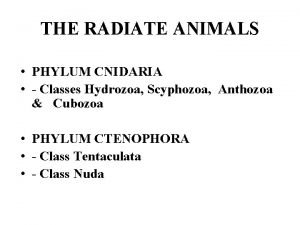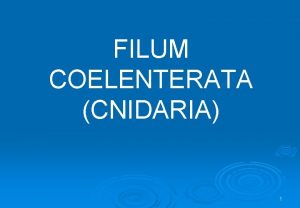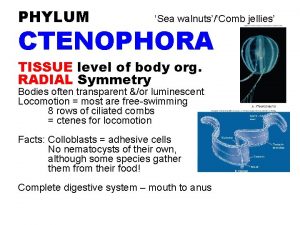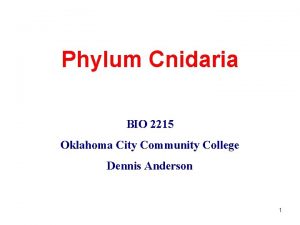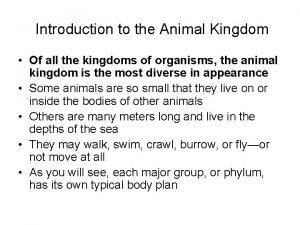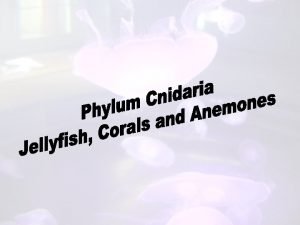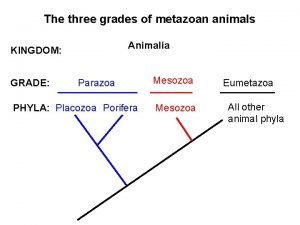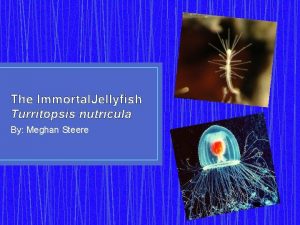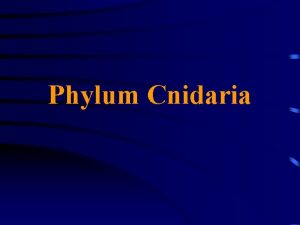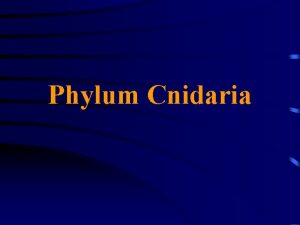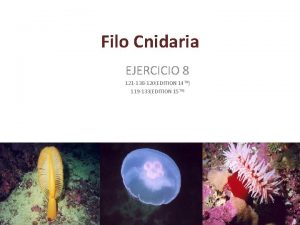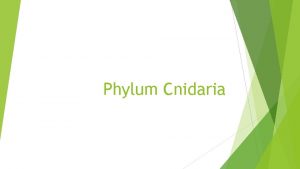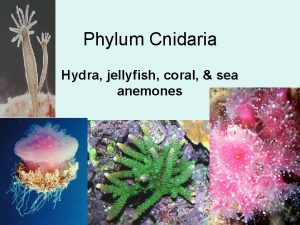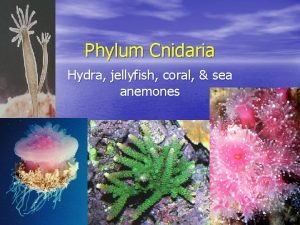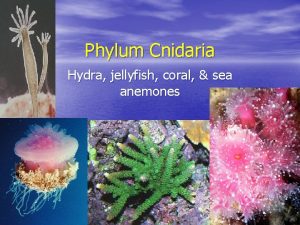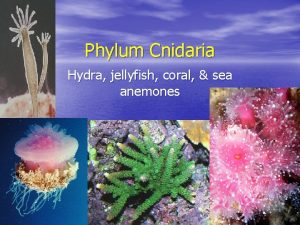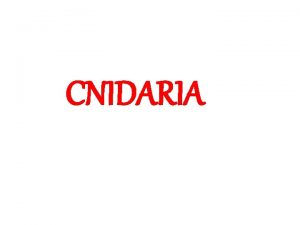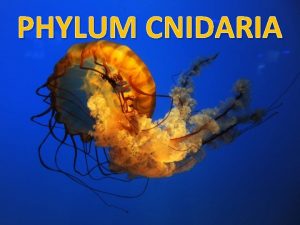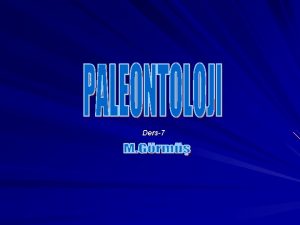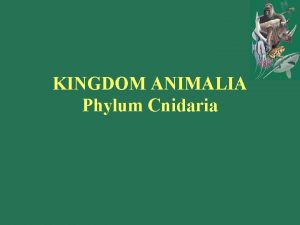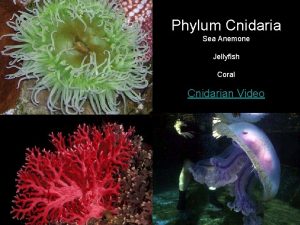Phylum Cnidaria Class Hydrozoa hydra Class Scyphozoa jellyfish














- Slides: 14

Phylum Cnidaria • Class Hydrozoa- hydra • Class Scyphozoa- jellyfish • Class Anthozoa- corals and sea anemones

Characteristics • All aquatic, mostly marine • Come in two basic forms – Polyp- tubular, mouth and tentacles at one end, base for attachment at the other end, sessile – Medusa- expanded bell shape body, motile v. Many Cnidarians exhibit both forms at some point during their life cycle


Class Hydrozoa • The hydra is our primary example • Polyp • As the hydra develops it forms to germ cell layers, the ectoderm and the endoderm. • Ectoderm forms the epidermis or outer skin • The endodermis forms the gastrodermis or the cell layer lining the gastrovascular cavity. Digestion occurs in these cells • Mesoglea separates the two cell layers • Stays attached by its sticky basal disk

Germ layer From Wikipedia A germ layer, is a primary layer of cells that form during embryogenesis. The three germ layers in vertebrates are particularly pronounced; however, all eumetazoans, (animals more complex than the sponge) produce two or three primary germ layers. Animals with radial symmetry, like cnidarians, produce two germ layers (the ectoderm and endoderm) making them diploblastic. Animals with bilateral symmetry produce a third layer (the mesoderm), between these two layers. making them triploblastic. Germ layers eventually give rise to all of an animal’s tissues and organs through the process of organogenesis.

Embryology

Feeding • Stinging cells (cnidoblasts) line the tentacles and produce capsules containing poisonous barbs, long coiled threads, or a sticky substance (namatocysts). • Namatacysts shoot out and grab prey which is usually a worm or other small invertebrate.

Response • Hydra is able to detect prey because it has a network of nerve cells and fibers extending throughout its body called a nerve net.

Reproduction Asexual • Budding • Regeneration Sexual • Ova is produced in ovaries • Sperm formed in testes • Ovaries and testes can be seen as small swelling on the hydras body wall • Sperm are released and fertilize the ovum of another hydra. This produces a zygote which divides and eventually breaks off and continues to develop into a new hydra.

Class Scyphozoa Phylum Cnidarian Class Scyphozoa Genus Aurelia (Common Jellyfish) 1. Sperm from male fertilizes egg in female gastrovascular cavity 2. Zygote develops on oral arm and becomes a ciliated larva called a planula 3. Planula swims away and attaches to base, now it’s in polyp form and called a scyphistoma 4. Grows and develops several horizontal constrictions, it’s called a strobila 5. Separate, each is an ephyra 6. Ephyra develops into large medusa


Class Anthozoa • Corals and Sea Anemones • “Flower animals” • Corals- polyp living in self-made hard skeleton made of calcium carbonate • Sea anemones- large stout-bodied polyps with rows of tentecles. Colorful because of symbiotic algae

• The Great Barrier Reef off the coast of Australia is the largest biological structure in the world. • Coral reefs are considered the rainforest of the ocean meaning they are very diverse with lots of different animals and species richness.

 Jellyfish phylum
Jellyfish phylum Characteristics of cnidaria
Characteristics of cnidaria Kladogram cnidaria
Kladogram cnidaria Class scyphozoa
Class scyphozoa Class scyphozoa
Class scyphozoa Do jellyfish reproduce sexually
Do jellyfish reproduce sexually Sea jellies
Sea jellies Three grades of metazoa
Three grades of metazoa Turritopsis nutricula
Turritopsis nutricula Box jellyfish
Box jellyfish Digestive system cnidaria
Digestive system cnidaria Phylum cnidaria general characteristics
Phylum cnidaria general characteristics Cnidarian life cycle
Cnidarian life cycle Characteristics of phylum cnidaria
Characteristics of phylum cnidaria Gonopore cnidaria
Gonopore cnidaria

